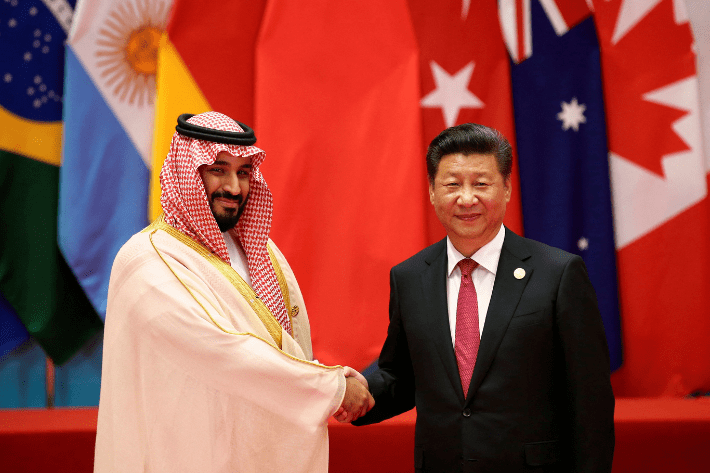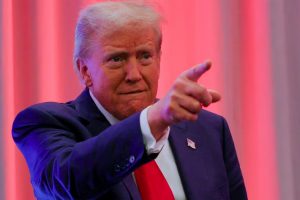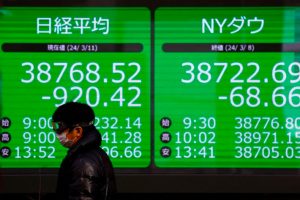China and Saudi Arabia have agreed to a local currency swap agreement worth 50 billion yuan ($6.93 billion) or 26 billion Saudi riyals, giving a fresh push to Beijing’s efforts to challenge the dollar’s dominance.
The People’s Bank of China said the deal “will help strengthen financial cooperation… expand the use of local currencies… and promote trade and investment,” between Riyadh and Beijing.
The swap agreement between the central banks of the two countries will be valid for three years and can be extended by mutual agreement, the PBoC said in a statement.
Also on AF: China Warns Argentina it Would be ‘Serious Mistake’ to Cut Ties
State media outlet the Global Times said the swap would encourage more countries in the Middle East to adopt the use of yuan.
The agreement comes amid strengthening bilateral ties between the two countries.
Saudi Arabia, the world’s top oil exporter, and China, the world’s biggest energy consumer, have worked to take relations beyond hydrocarbon ties in recent years, expanding collaboration into areas such as security and technology.
China imported $65 billion worth of Saudi crude in 2022, according to Chinese customs data, accounting for about 83% of the kingdom’s total exports to the Asian giant.
Russia remained China’s top oil supplier in October despite higher prices for Russian crude, with Saudi imports down 2.5% from the previous month as it continued to restrict supply.
During a visit to Saudi Arabia in December last year, Chinese President Xi Jinping had urged Gulf nations to use the yuan for energy deals, adding that Beijing was working to buy oil and gas using the renminbi.
The proposal was significant considering the US greenback has traditionally been the currency of choice for global energy purchases.
It also followed increasing Chinese purchases of Russian oil, gas and other commodities using the yuan, as Moscow rushed to combat the effects of Western sanctions against its invasion of Ukraine.
China has not yet used the yuan for Saudi oil purchases, however, traders have said.
Overtaking Euro, internationalising yuan
Beijing is thought to have the world’s largest network of currency swap arrangements in place, with at least 40 countries, but seldom reveals the broader terms of its arrangements.
“China seems to be using swap lines in a very different way to the US,” said Weitseng Chen, associate professor at the National University of Singapore. “(China) uses it as a credit line, so it’s on a constant basis, instead of a one-time, one-off thing during a financial crisis.”
In October, Argentina activated a currency swap line with China for the second time in three years to the tune of $6.5 billion.
The deal was aimed at helping the country increase its depleted foreign currency reserves in the midst of a major economic crisis, with annual inflation above 130% and central bank dollar reserves hitting negative levels.
But increasing the cross-border use of the yuan has been part of the authoritarian Chinese government’s strategy to reduce its reliance on the dollar and protect itself from the threat of Western sanctions.
The push has gained pace since extensive sanctions against Moscow came into force, and effectively froze out Russia from global payment systems.
That move has garnered significant results for China’s yuan. In March this year, the yuan overtook the dollar for the first time to become the most widely-used currency for cross-border transactions in China.
And earlier this month, it emerged that the yuan has overtaken the euro to become the second biggest currency in global trade finance, although it is still a long way from surpassing the US dollar.
- Reuters, with additional editing by Vishakha Saxena
Also read:
China, Saudi Seen in Talks for ETF Cross-Listings to Boost Ties
Global Economy Showing Signs of De-Dollarisation, Says JPMorgan
BRICS Looking to Counter Sanctions With Alternative Currencies
China Settles First LNG Trade in Yuan in Latest Hit to Dollar
China’s Yuan is Now the Most Traded Currency in Russia
China’s Moves to Boost Use of The Yuan Starting to Pay Off
Saudi Arabia, China in Yuan-Based Oil Sales Talks – WSJ
























